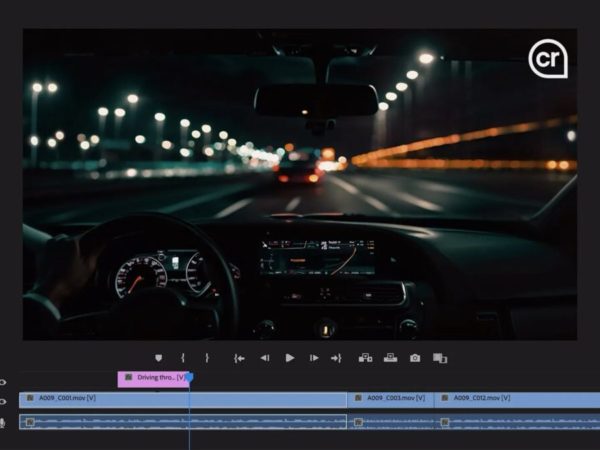Manjaro 19.0 (Kyria) has been released for general use. One may be bewildered why there is an unusual razzmatazz whenever there is a new release of software, a product or just about anything, especially in the tech sphere. According to my diagnosis, the work that is actually involved in brooding over the upgrade/release, the long moments of planning, the tumultuous effort to be creative and the resources invested to realize what was previously just in the mind can be difficult.
With the existence of many Linux distributions out there, the ability to stand out in the mammoth is key to ensure that a distribution wins the hearts of many. The inherent purpose of the distribution needs to be as clear and as practical as possible. Now Manjaro 19.0 (Kyria) is here for your use. Manjaro’s Lead developer Philip Müller was enthusiastic about the release of Manjaro Kyria and it sparked my curiosity. What is new? Yeah, let us get our feet muddy by jumping into that immediately.
The Kernel is 5.4 LTS
You get to enjoy the latest drivers available to date. Relative to the last installation media release, their tools have been improved and polished.
MATE Desktop is now in Manjaro Kyria
For those of you who mocked Manjaro for not having MATE Desktop, now you have no further excuses not to have this wonderful distribution as your primary OS. And never make the mistake of forgetting that it is based on Arch Linux, that beast of an Operating System.
Xfce 4.14 with a new theme called Matcha
Manjaro’s main Window Manager/GUI is Xfce. They believe only a few can claim to offer such a polished, integrated and leading-edge Xfce experience. A new feature “Display-Profiles” allows you to store one or more profiles for your preferred display configuration. They have also implemented auto-application of profiles when new displays are connected.
KDE Edition
The new KDE edition provides the powerful, mature and feature-rich Plasma 5.17 desktop environment with a unique look-and-feel, which they completely re-designed for this release. KDE has its own reputation of aesthetics that glimmer and glitter.
The full set of Breath2-themes includes light and dark versions, animated splash-screen, Konsole profiles, Yakuake skins, and many more little details. They managed to round off text editor Kate with some additional color schemes and offer Plasma-Simplemenu as an alternative to the traditional Kickoff-Launcher.
The sky is the limit this time around for you KDE lovers. With a wide selection of latest KDE-Apps 19.12.2 and other applications Manjaro-KDE aims to be a versatile and elegant environment ready for all your everyday needs. Give it a try and experience it for yourself.
GNOME Edition
The new GNOME Edition comes with a blend of creativity, elegance, and sweetness. Inherently, GNOME 3.34 comes with a basket of goodies. For example, easy creation of custom folders in the application overview: Simply drag an application icon on top of another to create a folder. The created folders are automatically removed when all icons have been dragged out. New Icons at your disposal and better settings.
Manjaro team have included a visual refresh for several applications and the desktop itself. The background selection settings also received a redesign, making it easier to select custom backgrounds. By default, they added their own dynamic wallpaper that changes throughout the day. That is sleek. Source: Manjaro.
Additionally, Manjaro’s new Gnome-Layout-Switcher enables you to change your desktop layout easily with preset layouts mimicking popular operating systems. Available layouts are Manjaro, Vanilla Gnome, Mate/Gnome2, Traditional Desktop/Windows, Modern Desktop/MacOs, Unity/Ubuntu Theme.
It automatically changes between dark and light themes when Nightlight is triggered. A new theme for the login screen and the addition of Feral’s Gamemode round up the clean new Gnome edition.
Manjaro Architect
If you are looking for a do-it-yourself installation similar to Arch-Linux, a smile should be developing on your face already. Manjaro-Architect has been well provided for you.
Manjaro-Architect is a fork of the famous Architect Linux installer by Carl Duff, that has been modified to install Manjaro. It is a netinstaller that downloads the latest available packages, so your system is up to date right after installation, regardless of how old your install media is.
Manjaro-Architect offers total customization on your Manjaro installation:
- choose which Manjaro kernels you want to use, or multiple kernels.
- select any Manjaro branch (stable, testing or unstable)
- consider your desktop from all current Manjaro editions, regardless of what install media you run the installer from. You can also install the base system only without a graphical user interface.
- add any unconfigured desktop environment
- pick the default shell for user (bash, zsh or fish)
- choose your graphics drivers to be installed with mhwd
- decide any extra packages to be installed
Manjaro i3
Before disassembling this tent, for your guys who are huge fans of i3 improved Window Manager (i3wm), your slice of this cake is well reserved. Manjaro i3 of this new release built by the community is available for download here as well. Other community editions include:
- Openbox
- LXDE
- Cinnamon
- LXQt
- Budgie
- Awesome
Manjaro is a pretty decent Linux distribution that you can make your primary desktop Operating System. With promising updates that Kyria has been born with, it is indeed destined to be a wonderful distribution. To prove that the hoopla that accompanied the release of Kyria was worth it, head over to the downloads to get your copy. If you can, consider supporting the project as well.
You may also like:
Setup Sway Tiling Window Manager on Fedora with Waybar
Top Minimal Container Operating Systems for running Kubernetes
Top 2020 Linux Distros for Desktop use
How To Install Podman on Arch Linux / Manjaro



